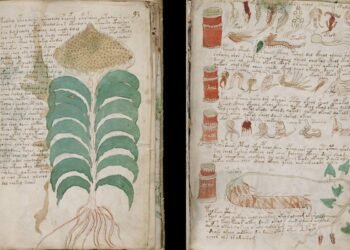Construction work on Federal Highway 105 in Hidalgo, Mexico, has unearthed the remnants of a pre-Hispanic pyramid and settlement.

Archaeologists from the National Institute of Anthropology and History (INAH) have identified the site, dubbed “San Miguel” due to its proximity to the town of San Miguel Metzquititlán, as a pre-Hispanic settlement. It spans from the Epiclassic period (CE 650–950) to the Late Postclassic period (CE 1350–1519).
The pyramid, referred to as “Structure 1,” was discovered during the construction of a third lane on the Pachuca-Huejutla highway in the municipality of San Agustín Metzquititlán. The site consists of five sectors with at least ten mounds and has yielded 155 artifacts, including ceramics, shells, and lithic materials, as well as evidence of lime floors, charcoal, and charred wood. Researchers believe the settlement may have been associated with the Metzca lordship, a multi-ethnic society that flourished in the Sierra Alta region.
“This archaeological record provides valuable insights into the human occupation of the Sierra Alta region, particularly in the Barranca de Metztitlán area, where historiography traces settlements back 14,000 years,” INAH stated in its official report.
To preserve the site, INAH conducted detailed documentation, including drone-based digital photogrammetry. Structure 1 was stabilized with a 43-meter-long masonry wall and reburied for conservation. Geotextiles were used to protect the exposed elements before reburial.
Preliminary research findings have been shared with local educational institutions, such as the Colegio de Bachilleres del Estado de Hidalgo and the Technological University of the Sierra Hidalguense, to foster awareness of the region’s archaeological heritage.
Héctor Labra Chávez, Director of Tourism for San Agustín Metzquititlán, said: “There are no known remnants of pre-Hispanic civilizations in this immediate area. Deeper studies are essential to uncover the cultural context of this significant find.” He noted that part of the pyramid’s base lies beneath the highway, making additional excavation necessary.
However, ongoing financial constraints have limited further exploration. INAH announced that budget cuts proposed for 2025 would reduce its funding by 45%, leaving little room for continued excavation or research.
Hidalgo is home to several notable pre-Hispanic sites, such as the Atlantes of Tula and the Xihuingo archaeological zone. The Atlantes, towering Toltec stone figures, are described by National Geographic as some of the largest anthropomorphic figures in the region, representing Quetzalcoatl. The Xihuingo site, associated with Teotihuacán, features the El Tecolote pyramid and astronomical markers.
Researchers hope that, despite financial challenges, future studies will reveal the cultural and historical significance of this newly uncovered settlement.
More information: INAH
























Disclaimer: This website is a science-focused magazine that welcomes both academic and non-academic audiences. Comments are written by users and may include personal opinions or unverified claims. They do not necessarily reflect the views of our editorial team or rely on scientific evidence.
Comment Policy: We kindly ask all commenters to engage respectfully. Comments that contain offensive, insulting, degrading, discriminatory, or racist content will be automatically removed.
My family once lived in Panama due to military commitment. We had a neighbor who was shown a location with many disposed of normal debris from a temporary shanty town of workers and family during construction of the original canal. These towns were moved location to location as the needs of the hand laborers required.
Our neighbor took us out to one of these trash dumps and we dug with careful care due to the fragility of some of the items found!! It was a very old non composted area with no other “treasure hunters” around!
I have always been interested in all sciences, so it was a wonderful adventure had by all! We even found items such as a 1/2 pair of dentures which came with a gold tooth! Many jars previously holding menthol related gels for the hands of the actual laborers! I felt like I was given a great gift!
A wonderful time was had by all! Not to mention a chance to give me a chance of a brief science lesson for our children!
This world shock me with a new news stuff discovered
I would simply like to give my thanks for everyone’s hard work. Thank you for all of the wonderful facts and knowledge please keep up the hard work and happy holidays to all!!❤❤